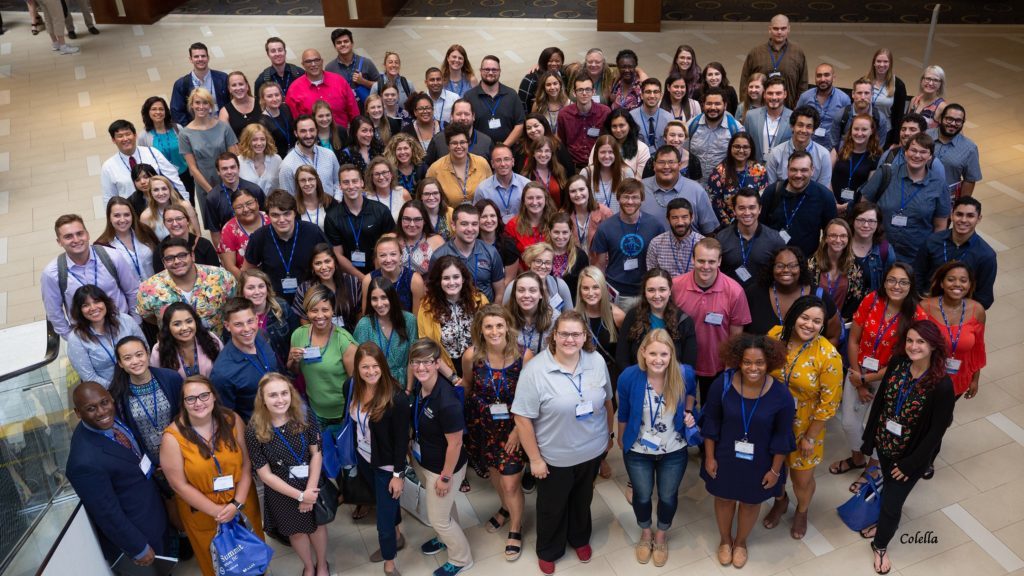26 Jun The National Science Foundation – Robert Noyce Teacher Scholarship Program
The National Science Foundation (NSF) recently opened applications for its Robert Noyce Teacher Scholarship Program (Noyce). As with many federal grant opportunities, there are a lot of “so” questions which need to be answered. So, what is the Noyce Scholarship Program? The National Science Foundation Robert Noyce Teacher Scholarship Program seeks to encourage talented science, technology, engineering, and mathematics (STEM) majors and professionals to become K-12 mathematics and science (including engineering and computer science) teachers. The program invites creative and innovative proposals that address the critical need for recruiting and preparing highly effective elementary and secondary science and mathematics teachers in high-need local educational agencies. The program offers four tracks: Track 1: The Robert Noyce Teacher Scholarships and Stipends Track, Track 2: The NSF Teaching Fellowships Track, Track 3: The NSF Master Teaching Fellowships Track, and Track 4: Noyce Research Track. In addition, Capacity Building proposals are accepted from proposers intending to develop a future Track 1, 2, or 3 proposal.14 Jun Administration for Children Youth and Families – Family and Youth Services Bureau – Basic Center Program
The Family and Youth Services Bureau (FYSB) recently opened applications for its Basic Center Program (BCP). As with many federal grant opportunities, there are a lot of “so” questions that come to my mind. So, what is the BCP? Funded under the Runaway and Homeless Youth Act passed in 1974, BCP works to establish or strengthen community-based programs that meet the immediate needs of youth and families of youth, who have run away from home or are experiencing homelessness. The purpose of the BCP is to provide emergency shelter and counseling services to youth under the age of 18 who meet one or more of the following criteria:- have left home without permission of their parents or guardians;
- have been forced to leave their home;
- cannot live safely with a parent, legal guardian, or relative;
- have no other safe alternative living arrangement; or
- are experiencing homelessness and might otherwise end up in contact with law enforcement or in the child welfare, mental health, or juvenile justice systems.
14 Jun Presentation Matters: How to Organize Grant Proposal Narratives by AGS Staff
Grant proposals consist of a variety of components depending on each grant’s requirements. Most require some form of a budget, whether that is a simple project budget or a complex organizational budget, or both. Some will also include a budget narrative or justification and any number of other attachments. But in any grant proposal, the narrative is where you will likely spend most of your time. Fortunately, the proposal’s narrative is the fun part! This is where you get to put your storytelling skills to work. So how do you get started? Much like an author would begin a novel, start with an outline.
12 Jun Administration for Children Youth and Families – Family and Youth Services Bureau – Street Outreach Program by AGS Staff
The Family and Youth Services Bureau (FYSB) recently opened applications for its Street Outreach Program (SOP). As with many federal grant opportunities, there are a lot of “so” questions that come to my mind. So, what is the SOP? To prevent sexual abuse and exploitation of young people who have run away from home or are experiencing homelessness and help them leave the streets, Congress established the Education and Prevention Services to Reduce Sexual Abuse of Runaway, Homeless, and Street Youth Program. It was established through the Violence Against Women Act of the Violent Crime Control and Law Enforcement Act of 1994. The legislation funds street-based outreach and education for youth who have run away from home or are experiencing homelessness. FYSB has funded the SOP since 1996. The purpose of the SOP is to provide street-based services to youth 21 years of age and younger who have run away from home or are experiencing homelessness and have been subjected to, or are at risk of being subjected to, sexual abuse, prostitution, sexual exploitation, and severe forms of trafficking. This includes building relationships between this target population and street outreach workers to move youth into stable housing and prepare them for independence.08 Jun Through the Equity Looking Glass by Julie Alsup, GPC
I have started this blog about ten times and never finished. The topic of equity and the concept of applying equitable lenses to the grant process is of great interest to me. I do want to develop a greater ability to sense and evaluate equity within myself and in my work over time and strive to improve upon it.26 May Parallelism: Lining Up Your Lists to Avoid Throwing Your Reader a Curveball. By Tom Assel, GPC
We’re grant writers. We often have to fit lots of content into character, word, or page limits. We always have to worry about keeping a reader’s attention. One way we condense content is by using a series, a list of three or more items separated by commas. One way to confuse readers and lose their attention is to write series that don’t make sense. This blog post will help you avoid that so you can write as clearly and concisely as possible.16 May Less is (Usually) More – Writing Lessons Learned from my Children by Michele Ryan, GPC
Like many of you, school closures due to the COVID-19 pandemic have placed me in the - let’s be honest - not entirely welcome position of balancing a full-time career with my new role of homeschool teacher. I naively and, looking back on it, pompously believed that this would be a piece of cake. I have teenagers, not small children who demand constant attention. They are good students. How hard can it be? Hard. Harder than I thought possible.11 May Organizing the Chaos By Tracey Diefenbach, GPC
You are knee deep in a large government grant proposal and… The executive director calls you on the way to another meeting and quickly ambles off a new strategy the agency will be embarking on that must be included in the proposal. The finance person sends you an email with three new expenses to include in the budget. As you are leaving a meeting with the evaluation team, you are told about a new assessment tool the agency will be implementing…08 May Advancing Grant Readiness
What does it mean to be grant ready? There are so many questions to ask, like does this fit our mission? Are we prepared to implement services that are aligned to the funder’s mission? At what point do you go to the next level? And when you...










